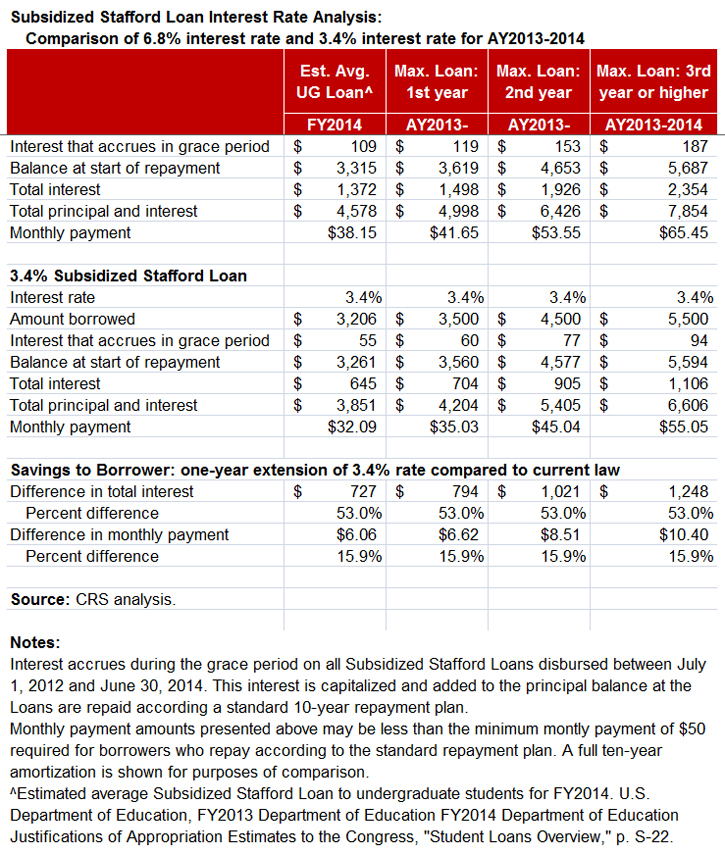Student Loans by the Numbers
June 12, 2013
On June 6, the Senate fell short of the necessary votes to address the looming deadline that will return interest rates on new subsidized Stafford student loans to 6.8 percent. Republicans in the House and Senate, along with the Obama Administration, have proposed tying Stafford loans to market-based rates. Senate Democrats, however, are pushing for a permanent tax increase as a temporary, short-term solution. Here are some facts on the issue.
- An estimated 7.7 million undergraduate students are expected to take out subsidized Stafford loans during the 2013-14 academic year.
- If the interest rate resets to 6.8 percent, new subsidized student loans will be affected -- not existing student loans.
- If the interest rate resets, the average student loan borrower who takes out the average subsidized Stafford loan amount of $3,206 will owe around $727 more in interest over a standard 10-year repayment period. That amounts to a cost difference of $6.06 per month.
- For students who borrow $5,500 – the maximum amount permitted for a subsidized Stafford loan for students in their third and fourth year of undergraduate study – the change in interest rate will amount to a difference of $1,248 in total interest over a standard 10-year repayment period. This amounts to a cost difference of $10.40 per month.
- The Democrat bill only addresses subsidized Stafford loans, which account for roughly 40 percent of all federal student loans. The Republican bill would reform interest rates for 100 percent of federal student loans including subsidized and unsubsidized Stafford loans and PLUS loans, as well as those available to parents and graduate students.
- For the roughly 60 percent of borrowers of unsubsidized Stafford and PLUS loans, the Republican bill could save parents and students up to $80 a month.
- Three out of every four students who take out Stafford loans use both subsidized and unsubsidized Stafford loans. Thus, the Republican bill would benefit more students, and it would help them more.
- With the current Treasury note at 1.75 percent, a student who takes out a covered student loan for next year would pay 4.75 percent for the life of that loan.
